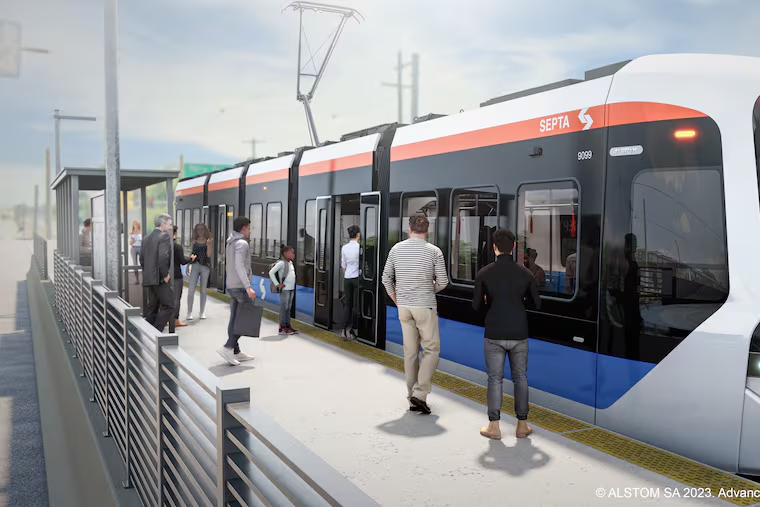Feds award $50 million to Philly for traffic safety and trolley system work
Philly and SEPTA are receiving federal money to help finance traffic safety and transit improvements in historically disadvantaged areas of the city.

The U.S. Department of Transportation awarded $50 million in grants last week to infrastructure projects in North and Southwest Philadelphia to improve traffic safety and public transit in neighborhoods that have elevated numbers of serious vehicle crashes.
One project will receive $25 million to build traffic-calming infrastructure on streets near several North Philadelphia elementary schools, creating slow zones to “provide safe corridors for students to walk to school,” said Chris Puchalsky, director of policy and strategic initiatives for the city’s Office of Transportation, Infrastructure and Sustainability.
The second $25 million grant will help pay for a collaborative project of SEPTA, OTIS and the Philadelphia Industrial Development Corp. on about 3.85 miles of Southwest Philadelphia streets. SEPTA will work on its program to modernize the trolley system; the city will build bicycle lanes, narrow vehicle lanes, improve pedestrian crossings and install traffic-calming devices.
Overall, USDot gave out $2.2 billion in RAISE discretionary grants across the country — with 70% of the money for projects in what the federal government defines as areas with persistent poverty or home to historically disadvantaged communities. The program was expanded under the bipartisan infrastructure law of 2021.
“The Biden administration has been great at using a lot of these grants to help disadvantaged communities,” Puchalsky said, noting that emphasis aligns with city priorities. “We share the same values,” he said.
Generally, areas with higher levels of poverty bear a disproportionate share of injuries in crashes involving motor vehicles, often due to traffic volume and road design.
Slow-traffic zones around the North Philadelphia schools could include raised crosswalks with better markings, curb bump outs, and adjusted traffic signals to make it easier for pedestrians, particularly young ones. Such “complete streets” projects are part of the city’s Vision Zero goal of reducing traffic deaths to zero by 2030.
The $29 million project is not designed yet. OTIS plans to work closely with community members to figure out what and where improvements are needed, in a process that goes beyond the public-outreach efforts normal for infrastructure projects.
“We call it co-creation — we’ll actually be designing the project with community members,” Puchalsky said.
Design will begin next year or in 2025, with construction in the years following, he said. The city will add $4 million as the local contribution to the project.
In Southwest Philadelphia, along the route of the 36 trolley, SEPTA will build fixed stops with raised platforms and upgrade switches and track connections as part of its plan to modernize the trolley system. Consolidation of trolley stops to fewer stations will make for faster service and make trolleys better accessible to people with mobility issues, the transit agency says. SEPTA already has ordered a new fleet of trolleys.
Street improvements will include curb extensions at intersections to slow turning vehicles; a major realignment of the curve at 49th Street and Grays Avenue to slow vehicles and create a gateway to the neighborhood; and closure of a shortcut that allows vehicles to travel at high speeds from Lindbergh Boulevard to Grays Avenue. Also planned: two-way bicycle lanes protected from motor vehicles by curbs and concrete planters.
Total cost of the joint project is projected at $125 million, with $80 million coming from SEPTA, the city and PIDC, an economic development agency.